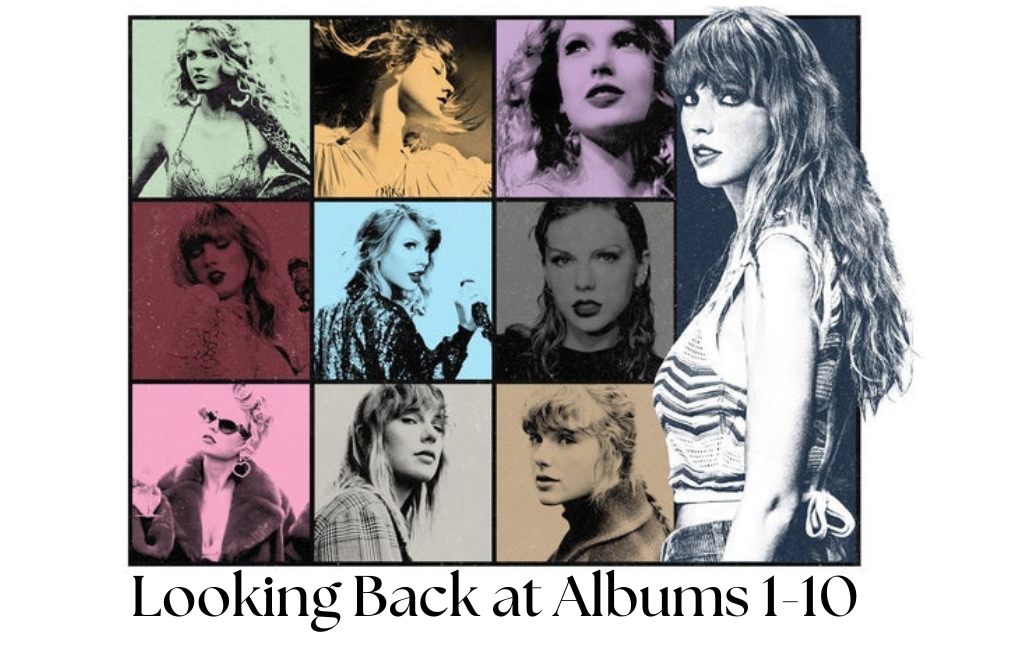Note: This review is number eight in a series looking back at Taylor Swift’s first 10 albums.

Taylor Swift’s album “folklore” was created during the COVID 19 pandemic. Recorded and produced in isolation, Swift recorded all tracks at a home studio and worked with producers Jack Antanoff and Aaron Dessner.
Dropping “folklore” proved a complete surprise to the fan base, Swift didn’t even give any easter eggs beforehand.
Without any warning, “folklore” was released on July 24, 2020. Again, Swift shifted the angle of her work significantly from her past albums.
On the tracks, Swift creates a fictional world, showcasing her storytelling abilities and blurring the line between truth and fiction in her music. In another artistic turn, Swift takes on indie-folk and alternative music.
The album is a different sound for Swift, not previously seen in her biggest hits but hidden and sprinkled in her past works.
Reminiscent of “New Years Day” on “reputation,” “Soon You’ll Get Better” on “Lover,” “This Love” on “1989,” and “State of Grace (acoustic version) on “Red,” Swift dives into themes of escapism and romanticism on “folklore.”
Some of the most popular songs on this album are “august,” “betty,” and, of course, the lead single “cardigan.” These three songs work together to create a story arc within the album. Swift creates the characters Betty, James, and (as the Swifties have named her) Augustine.
These three characters create a classic teenage love triangle, with each song providing a different point of view.
The story starts with a retrospective from Betty’s perspective in the song “Cardigan,” reflecting on her relationship with James and questioning if she should give him forgiveness for the summer he spent with Augustine.
Next, “august” reveals Augustine’s perspective, the other girl James spent a summer with while still in a relationship with Betty. In the track, Swift unveils a girl who was truly in love with James.
During her documentary “Folklore: The Long Pond Studio Sessions,” Swift says Augustine was “a really sensitive person who really fell for him. And she was trying to seem cool and seem like she didn’t care, because that’s what girls have to do…She thought they had something really very real. And then he goes back to Betty.”
Swift finishes out the story with “Betty,” a song from James’ viewpoint, asking Betty to come back to him, saying Augustine was a mistake. Swift evokes heartbreaking empathy for both of the women involved in the story. Listening to “Betty,” it’s hard to not feel bad for the character James.
The album also includes deeper songs, like “mirrorball” and “peace,” which contrast Swift’s life as a superstar with the struggles of day-to-day life.
On “mirrorball,” Swift sings:
And they called off the circus
Burned the disco down,
When they sent home the horses
And rodeo clowns,
I’m still on that tightrope,
I’m still trying everything to keep you laughing at me
The song shows her desire to continue holding the public’s attention, creating an intense relatability of never feeling good enough, always trying as hard as possible, but people don’t seem to notice.
The heartbreaking “peace” reflects Swift’s difficulty having a normal life while being such a global phenomenon. She considers the impossibilities of her life, things she can’t control.
She warns her lover and asks if she alone is enough, even if there is “robbers to the east,” and “clowns to the west.” The song is even more heartbreaking for fans who followed her falling out with Joe Alwyn, her boyfriend at the time, and now knowing that for him she wasn’t enough.
The album does not stop there. Some of the most heartbreaking songs in her discography are sprinkled through “folklore,” which thrives on its lyrics and storytelling. The album won high praise by the Recording Academy, securing nominated for 5 Grammy nominations and winning Album of the Year.
For Swifties, “folklore” shows Swift seizing the chance to explore her creative abilities and break new ground.

